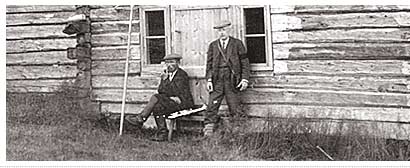

MATTI MOROTTAJA
![]()
 |
|||||
 |
|||||
MATTI MOROTTAJA |
|||||
|
|||||
|
|
|
|
|
|
|
|
A son was born on December 28, 1942, at Sammuttijärvi to Karhu-Kuobžâ-Saammâl (Sammeli Morottaja) and Haanu-Ánná, who received the name Matti. His life did not begin easily, as the first person that he saw was a German military doctor. He was able to live a couple years at Sammuttijärvi before the war in Lapland broke out and all of Lapland was forced to evacuate. The expatriation ended after a year in the summer of 1945 and Matti came home to his parents. Kuobžâ-Saammâl Matti, Matti Morottaja, attended Kaamanen Primary School in the autumn of 1949 until the 7th grade and continued for another half year in Ivalo. Starting school was not easy because he had to learn a new language: Finnish. After he got out of school he made a promise that he would never study in a school again. He went in 1962 anyway to the Sámi Christian Folk High School in Inari and upon graduation he attended, still in the ‘60s, a teachers’ collage in Kemijärvi. He got to know other Sámi students there and thus the Sámi youth organization “Teänupakti” was born. At the same time Matti began to attend Sámi teachers’ meetings. College lasted altogether 6 years, during which time he did his military service in Rovaniemi and Immola. When he graduated from college in 1969, he did not want to become a teacher because teaching, or getting stuck for life in some isolated school in the woods, was not an attractive thought. But in the end Matti anyway went to work and he went as far as Turku. There he organized and transcribed Sámi language audio tapes and studied at university at the same time. But Matti did not get to study very much. Because of his work he had to go often to the shores of the Tana on survey trips to gather old stories. Because of this he was not always able take exams and therefore his university studies did not progress. In 1971 Elias Kytömäki called Matti and asked him to apply for a teacher’s job at the Sámi Christian Folk High School. The previous teacher Volmari Holmberg had drowned. So Matti thus began his teaching career at the Folk High School in the autumn of 1971 and taught for 5 years. In 1973 the Sámi Parliament was founded which he participated in from the very beginning and was even chairman for six years. Matti has been involved with the Sámi Popular Assembly, which became successor to the Sámi Parliament, ever since its founding. In 1974 Matti joined the Sámi Council, the integrated Sámi institution of the Nordic countries, where he also served as chairman. From the 1970s, he has been able to work in many different language institutions such as the Sámi Parliament Language Commission and the Finland’s Sámi language commission of European minority languages, EBLUL. In 1976, Matti went to work as an auxiliary planner for the Provincial Government of Lapland. His work included affairs related to teaching the Sámi language and overseeing work on language materials. His professional title was later changed to School Superintendent and after that Educational and Cultural Superintendent. He was the first Inari Sámi language school teacher and served as a part-time teacher from school year 1976-1977 on. He started working as a full-time Inari Sámi teacher from 1997 until his retirement. He received full qualification as Inari Sámi language teacher in 1998. Matti has been the chairman of the Inari Sámi Language Association since it was founded in 1986. In the autumn of 1997, the Association initiated a language “bath” (daycare) in Inari in order to teach under-school age children Inari Sámi as children learn language, i.e. by speaking. Children who have attended the daycare have started school speaking Inari Sámi so well that that it became necessary to arrange classes for them. Even today there are not enough Inari Sámi teachers, so Matti took leave of absence from work and began teaching Inari Sámi in the schools. He is the one who, through his persistence, stubborn tenacity and diligence, has more than anyone else influenced the progress of he of Inari Sámi language in the end of the 19th and the outset of the 20th centuries. |
| |||||||||||||||||||
| © 2006 Sámi musea Siida & Anarâškielâ servi siida@samimuseum.fi |